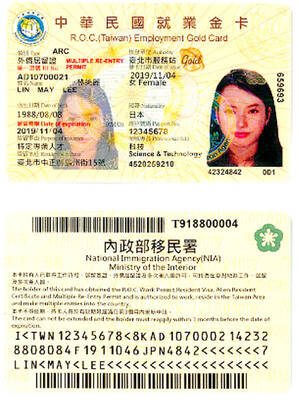Oil prices diverged this week as traders reacted to demand forecasts and the performance of the US dollar, while metals futures hit multi-month highs.
OIL: Crude oil began this week on a downbeat note, sinking under pressure from mediocre demand in the US, and falling further after the IEA warned about risks of high oil costs.
The IEA on Tuesday revised up its forecast for global oil demand this year by 30,000 barrels per day owing to unexpectedly strong economic activity in the US, Asia and the Middle East.
However, the IEA also warned in its latest monthly report that oil prices above US$80 a barrel could hamper economic recovery.
“While ongoing price subsidies may shield non-OECD consumers from the reality of any potential renewed surge in prices, this, plus tighter credit than two years ago, could stall OECD economic recovery or render it more ‘oil-less’ than we currently envisage,” the IEA said. “Ultimately, things might turn messy for producers if [oil at] 80-100 dollars a barrel is merely seen as the new 60-80 dollars a barrel, stunting economic recovery while prompting resurgent non-oil and non-OPEC supply investment.”
By late on Friday on the New York Mercantile Exchange, Texas light sweet crude for delivery in May slid to US$84.08 from US$85.45 a week earlier.
On London’s IntercontinentalExchange, Brent North Sea crude for June delivery stood at US$86.53 compared with US$85.23 for the May-expired contract a week earlier.
PRECIOUS METALS: Precious metals prices hit multi-month highs as the US dollar weakened.
Gold reached US$1,170 a barrel on Monday — the highest level since the start of December.
The price of gold is set to win further support as investors shun struggling currencies, notably the dollar, metals consultancy GFMS predicted on Wednesday.
“Looking ahead, further price gains were thought likely as the investment case was still perceived as strong, with for example all the major currencies now being questioned by investors,” London-based GFMS said in its latest annual survey on gold.
By late on Friday on the London Bullion Market, gold eased to US$1,151.50 an ounce from US$1,152.50 the previous week.
Silver grew to US$18.34 an ounce from US$17.69.
On the London Platinum and Palladium Market, platinum fell to US$1,708 an ounce from US$1,717.
Palladium jumped to US$532 an ounce from US$511.

GAINING STEAM: The scheme initially failed to gather much attention, with only 188 cards issued in its first year, but gained popularity amid the COVID-19 pandemic Applications for the Employment Gold Card have increased in the past few years, with the card having been issued to a total of 13,191 people from 101 countries since its introduction in 2018, the National Development Council (NDC) said yesterday. Those who have received the card have included celebrities, such as former NBA star Dwight Howard and Australian-South Korean cheerleader Dahye Lee, the NDC said. The four-in-one Employment Gold Card combines a work permit, resident visa, Alien Resident Certificate (ARC) and re-entry permit. It was first introduced in February 2018 through the Act Governing Recruitment and Employment of Foreign Professionals (外國專業人才延攬及雇用法),

RESILIENCE: Deepening bilateral cooperation would extend the peace sustained over the 45 years since the Taiwan Relations Act, Greene said Taiwan-US relations are built on deep economic ties and shared values, American Institute in Taiwan (AIT) Director Raymond Greene said yesterday, adding that strengthening supply chain security in critical industries, enhancing societal resilience through cooperation and deepening partnerships are key to ensuring peace and stability for Taiwan in the years ahead. Greene made the remarks at the National Security Youth Forum, organized by National Taiwan University’s National Security and Strategy Studies Institution in Taipei. In his address in Mandarin Chinese, Greene said the Taiwan-US relationship is built on deep economic ties and shared interests, and grows stronger through the enduring friendship between

CAUTION URGED: Xiaohongshu and Douyin — the Chinese version of TikTok — are tools the Chinese government uses for its ‘united front’ propaganda, the MAC said Mainland Affairs Council (MAC) Minister Chiu Chui-cheng (邱垂正) yesterday urged people who use Chinese social media platforms to be cautious of being influenced by Beijing’s “united front” propaganda and undermining Taiwan’s sovereignty. Chiu made the remarks in response to queries about Chinese academic Zhang Weiwei (張維為) saying that as young Taiwanese are fond of interacting on Chinese app Xiaohongshu (小紅書, known as RedNote in English), “after unification with China, it would be easier to govern Taiwan than Hong Kong.” Zhang is professor of international relations at Shanghai’s Fudan University and director of its China Institute. When giving a speech at China’s Wuhan

The Ministry of Transportation and Communications yesterday said that it would redesign the written portion of the driver’s license exam to make it more rigorous. “We hope that the exam can assess drivers’ understanding of traffic rules, particularly those who take the driver’s license test for the first time. In the past, drivers only needed to cram a book of test questions to pass the written exam,” Minister of Transportation and Communications Chen Shih-kai (陳世凱) told a news conference at the Taoyuan Motor Vehicle Office. “In the future, they would not be able to pass the test unless they study traffic regulations